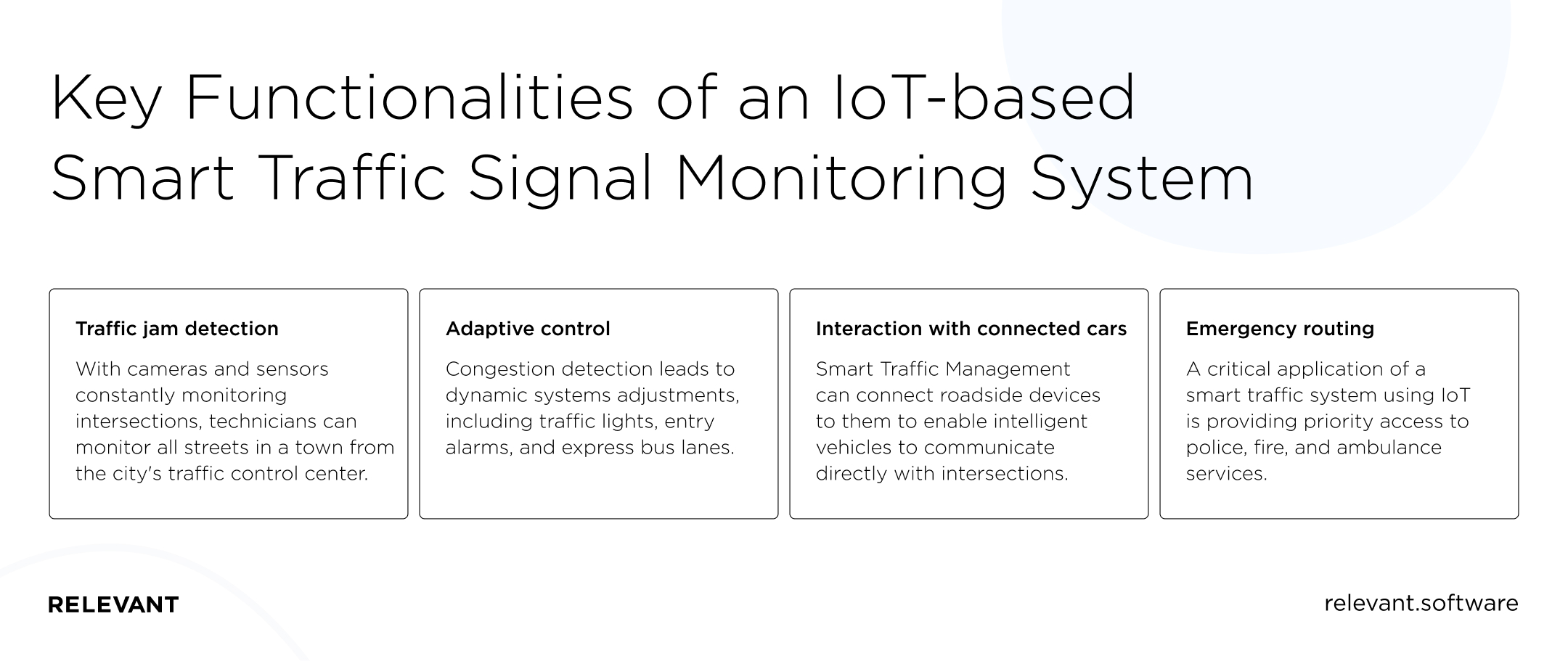IoT in Transportation All About IoT Smart Traffic Control System Circuit Diagram
BlogIoT in Transportation All About IoT Smart Traffic Control System Circuit Diagram Real-time Traffic Monitoring: The system uses IoT sensors to monitor traffic conditions in real-time.; Traffic Optimization: Through real-time data analytics, the system identifies congestion points and suggests optimal routes to reduce congestion.; Data Storage and Analysis: Data collected from IoT sensors is stored in MongoDB and analyzed to identify trends and patterns in traffic flow. In this project we present an intelligent traffic violation detection and traffic flow analysis system to monitor and measure red light jumping with RFID technology. 4.1 Method used. If any car passes the stop signal, the reader will read the tag that violated the rule and will retrieve its information from the database. The advent of real-time traffic rules violation detection systems powered by machine learning marks a pivotal moment in road safety management. By harnessing the capabilities of advanced algorithms, these systems analyze live video streams from traffic cameras, swiftly identifying instances of rule violations with unparalleled accuracy.

The Prototype of Traffic Violation Detection System Based on Internet of Things Published by D Hirawan, A Hadiana, Abdurakhim A breakthrough technology has been devised in the area of Traffic Control System for checking of the violation of the vehicles at zebra crossing. The Prototyping method consists of five stages namely attributable to human factors, with traffic violations being one of the most prevalent and typical causes. India is presently progressing towards automated solutions to mitigate traffic violations. The objective of this project is to establish a penalty system for traffic violations by employing Internet of Things (IoT) and image processing

PDF Advanced Traffic Violation Control and Penalty System Using Iot and ... Circuit Diagram
the Internet of Things, the implementation of a vehicle traffic monitoring system using IoT would provide a faster, efficient and yet accurate results. With the rising population spending most of their time travelling, stuck amongst traffic, finding a way to reduce this time will make it fruitful for everyone. The system reduces response time for violation detection by 60% success rate. In conclusion, this project demonstrates a reliable and efficient traffic signal violation system, leveraging IoT and Artificial Intelligence (AI) technologies to enhance road safety. The Traffic Violation Detection System demonstrates how AI can disrupt traffic management. By combining Python, Computer Vision, and IoT, we can create a scalable, real-time solution to reduce
